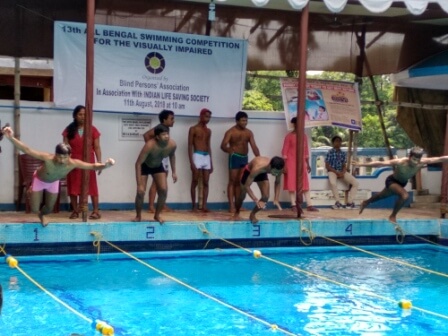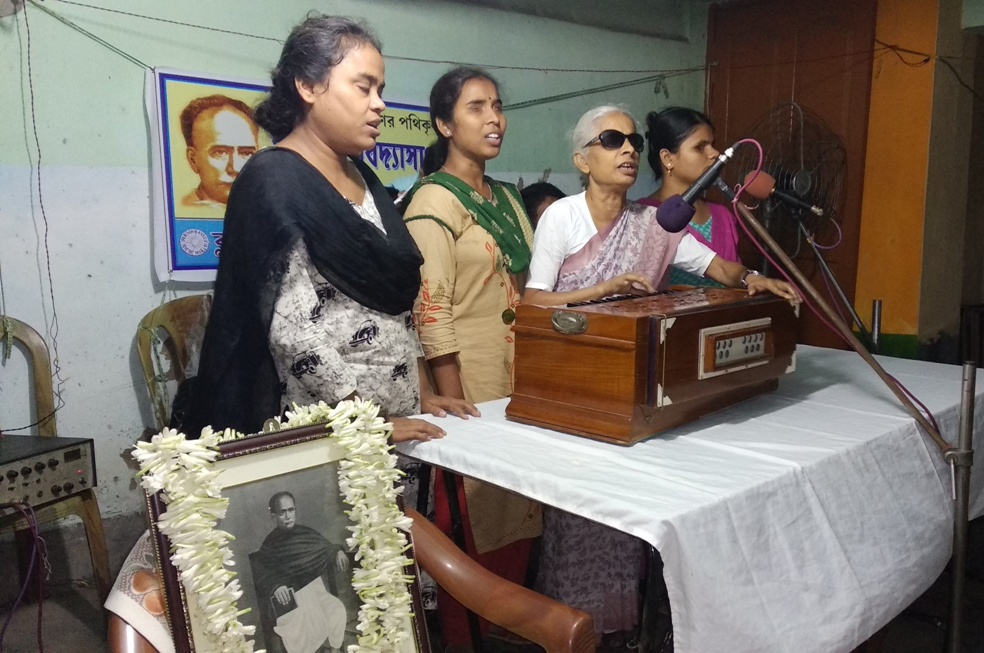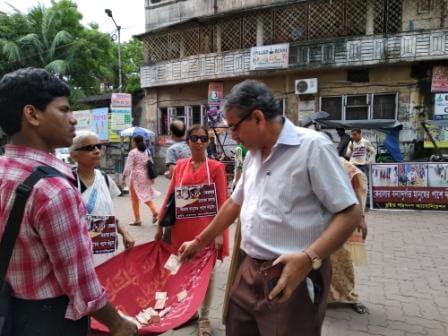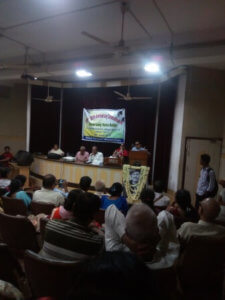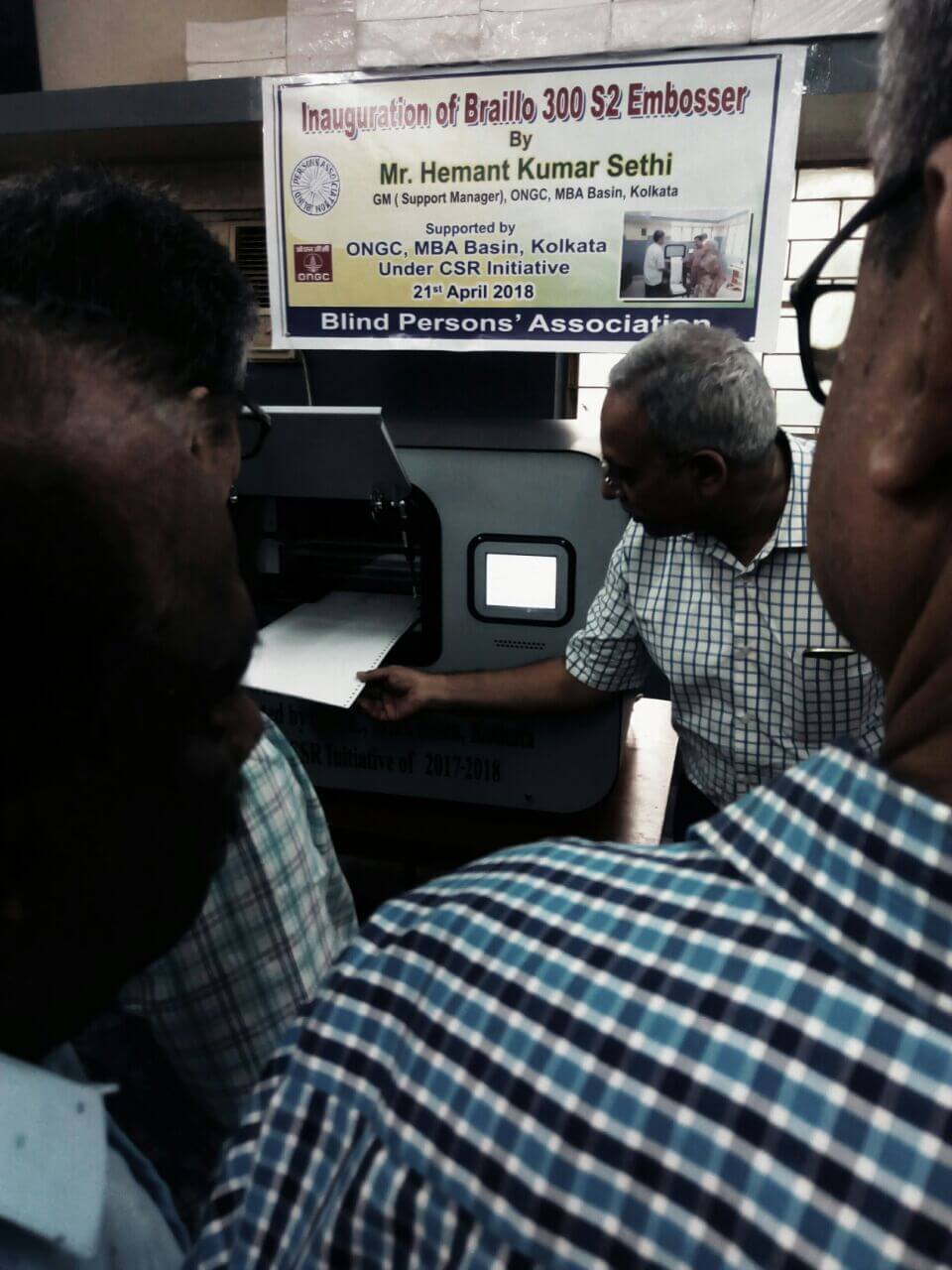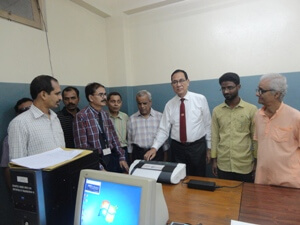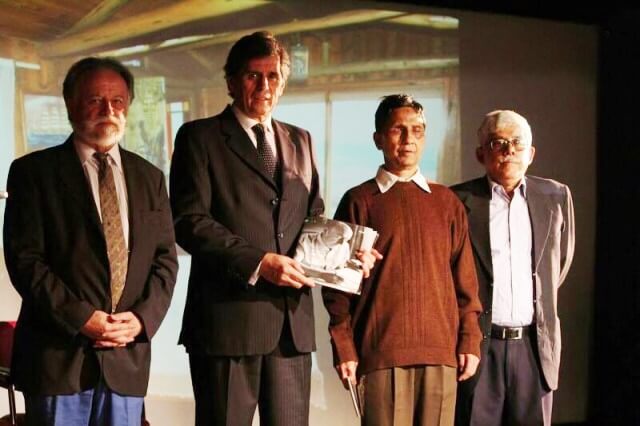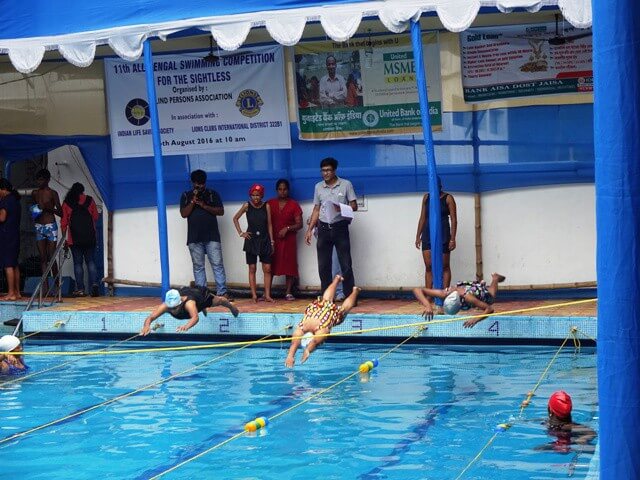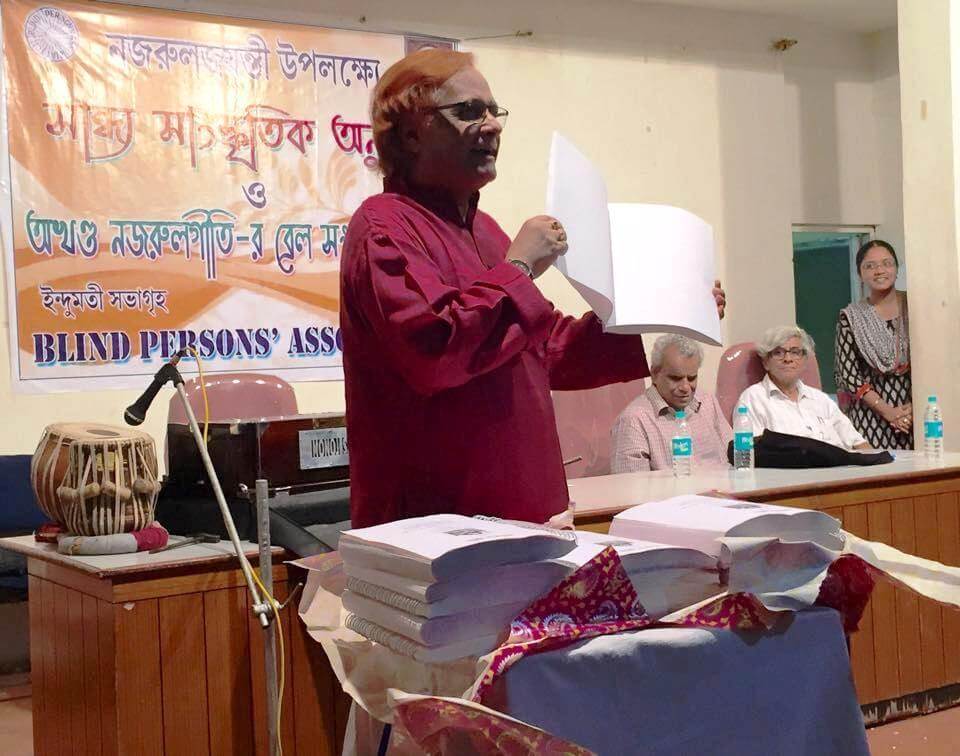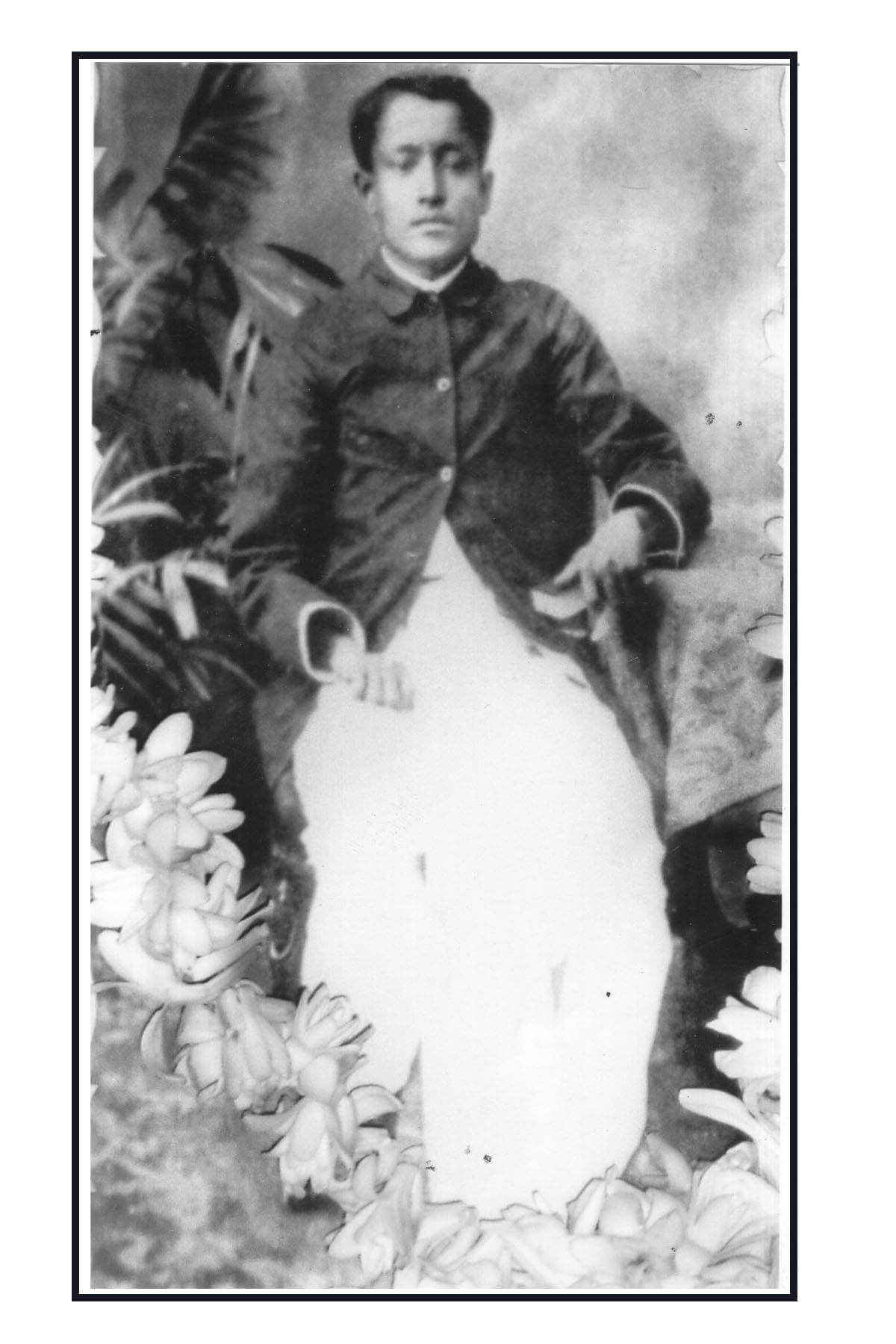The following article by Shri Saikat Kar, former General Secretary of Blind Persons’ Association, was published in the souvenir on the occasion of the bicentennial birth anniversary of Monsieur Louis Braille in 2009. The article is put up on the web considering its profound study of the time immediately before the advent of Louis Braille.
How did a mere touch become a touchstone? How did it inspire Louis Braille, the emissary of light in the lives of the light denied, at the prime of his life? It inspired Braille so much that its memory returned to his mind time and again at any critical juncture of life. It was the imbuing touch of a hand, affectionate and soothing, of Monsieur Valentin Haüy, the forerunner of Braille in the struggle to free visually impaired people from the dungeon of ignorance and ignominy. The warm and cordial Han clasping between them took place when the former was invited to Royal Institute for Blind Youth at Paris, the first institution for the blind in the world, founded by Haüy himself 37 years ago. Louis was then a student of that school. But what deterred Haüy from entering in his own institute for a long period before the invitation reached him? How much pains, sufferings and risks did he undertake to establish the school and what reward did he achieve in return? In order to get satisfactory replies to these questions we must begin from the beginning of his life.
Valentin Haüy was born on November 13, 1745 in St. Just les Marais, in Picardy, not far from Paris. His father was a weaver who supplemented his earnings at the loom by ringing the Angelus bell at the nearby Premonstrant Abbey. Often Valentin and his older brother, Abbe Rene-Just, walked across the field to toll the bell for their father. In this way, they came to know the monks and under their tutelage acquired a good education. Rene was intelligent and eventually became a famous scientist on crystallography. Owing to his good training in languages Haüy secured work as a translator of correspondence at the Ministry of Foreign Affairs, and in his free time did some private tutoring. A sudden incident changed his aim in life.
One day in September, 1771 while strolling down to a street in Paris Valentin came to the Place Louis-Le-Grand, now Vendome. His attention was attracted by loud hooting and laughter emerging from the Café Saint Ovide. What a ghastly scene! Mounted on a high platform in this café were ten blind men scraping crude bows on rough stringed instruments. Huge pasteboard spectacles devoid of lenses emphasized the emptiness of the sightless eyes. Lighted candles set to illumine the sheets of music only revealed their uselessness, for the notation was turned toward the audience. Grotesque robes and dunce caps with ass’s ears added insult to the ridicule to which the men were subjected. For some two months, these poor beggars attracted business to the café by the discord they thumbed out on the fake instruments as they moaned a monotonous chant. And in this burlesque at the expense of handicapped human beings, the Parisians of the time found amusement. The scene shocked him, and he devoted his life to improving the condition of the sightless through the medium of practical education.
Later, When reviewing this incident , Valentin Haüy wrote:
“Why was it that a scene so dishonorable to humanity did not perish the instant of its conception? Why it was that poetry and picture should lend their divine ministration to the publication of this atrocity? Ah! It was without doubt, that the scene reproduced before my eyes, and conveying to my heart profound sorrow, might inspire and arouse my soul. ‘Yes,’ I said to myself, seized by an exalted enthusiasm, ‘I will put in their hands volumes printed by themselves. They trace the true characters and will their own writing, and they will be enabled to give harmonious concerts. Yes, atrocious maligner, whoever thou art, the ears of the ass with which thou wouldst degrade the head of misfortune, shall be attached to thine own.'”
This emotional oath is no doubt a reflection of the zeitgeist of Renaissance which ushered in new ideas and doctrines. It proclaimed education for all for the first time in history. In this juncture the necessity to educate the visually impaired people which was not felt centuries after centuries stirred the philanthropic minds of the intellectuals like Diderot and Rousseau. They suggested for the first time that sightless children can be educated and through education they should be mainstreamed in to the society. Coming from such erudite pens these new ideas made a deep impression on the society. This urgency gradually took a form of social movement. Haüy obviously was familiar with their writings. The incident at Café St. Ovide touched his emotion and changed it in to a conviction.
Gradually Haüy had become interested in what was being done for the deaf at that time. The pioneer work of the Abbe de 1’Epee with deaf-mutes was being widely discussed in Paris, and the achievement of the Abbe Sicard, his successor, in teaching one boy, Jean Massieu, communication through the sign language commanded wide respect and strong support. More than a decade was to pass, however, before any active steps were taken to “substitute the truth for this mockery.” During this futile period his interest did not lessen, he searched frantically for a proper way to materialize his dream.
Another incident strengthened Haüy’s pledge and perhaps led to its solution. This was “a display of simple honesty on the part of a blind beggar. Given a coin larger than he was accustomed to receive, the beggar called the donor back and asked if he had not made a mistake. Haüy was impressed not only by the honesty of the man, but by his acuteness of touch. He began to consider the possibilities of a sense that could so readily distinguish the differences between two small coins.
It took a woman, however, to get Haüy really started. The rage of Paris at that time was the fascinating Maria Theresa von Paradis, the blind pianist from Vienna. Born in 1759, she soon exhibited extraordinary ability, particularly in music. Her father, a councilor in the court of Empress Maria Theresa, was able to provide the best of tutors as well as to bring his child to the attention of the Empress. When the Empress heard Maria sing in the court church of Vienna, she arranged for her training by a distinguished teacher and gave her parents an annuity of 200 florins to further her education. While concentrating on music, Maria studied languages, history and geography, and acquired supreme grace and poise, so that she became a living example of what a blind person with education could do and be. In 1784, she reached Paris, Where Queen Marie Antoinette became her sponsor. Among those who attended Maria’s concerts in Paris was Valentin Haüy. Being greatly impressed he told her of his vow to educate the blind. Maria proved both helpful and encouraging. She told Haüy that she had learned to write by prinking out with a pin the letters of the alphabet on paper placed on a cushion and to read by reversing the paper and deciphering the pricked letters with her fingertips. She described a press that had been made for her which enabled her to print German characters in relief. But perhaps more important, she told Haüy of her correspondence with a young German named George Weissembourg, who, although blinded at five, had learned to read and write and had acquired considerable education. This youth had been fortunate in his teacher, Christian Niesen, who was clever in developing devices as well as in using those employed by Saunderson.
Haüy understood that it was high time to fulfil his promise made 14 years ago. He began to look for a prospective youth as his pupil as Jean Massieu found by Abbe Sicard. On the porch of the church of St. Germain, he found Francois Lesueur, then seventeen, illiterate, and without sight since he was six weeks old. At first, Francois was reluctant to give up his profitable spot for begging, since his large family needed all the money he could bring home. After persuasion from Haüy, Lesueur agreed to study afternoons if he was permitted to beg in the morning and was paid for his afternoon losses. Soon the businesslike beggar became so absorbed in the experiment that he paid to it full time and attention.
Having secured a promising pupil, Haüy then realized the need for educational media. He drew heavily upon the information given him by Maria von Paradis, investigated the maps and other appliances developed in the education of Weissmbourg, and made an improved model of Saunderson’s mathematical slate. Haüy’s greatest need was to find a medium of reading and writing without sight and this he attained in a way almost as dramatic as the incident at the Café Saint Ovide. One day in 1786, Francois Lesueur, while handling some papers on Haüy’s desk, accidentally ran his hand over a printed sheet. He passed his fingers over it again and then called the master. To him he pointed out the letter o which his fingers detected on what Haüy saw to be the reverse side of a funeral notice fresh from the press. This was the hint that Haüy needed. If Francois could distinguish so slightly raised ordinary printing, what could any blind person do with enlarged type firmly and especially embossed. Soon Haüy was embossing sheets of paper with an italic script type commonly in use at that time. A way for the blind to read had been found!
With a medium of writing developed, his devices ready, and his methods formulated, Haüy began to make progress with Francois Lesueur. In six months, the blind youth could read and write embossed type. Confident in his progress, Haüy felt ready to ask for public approval and support. Through his brother Rene, now a familiar scientist in the scholarly circles of Paris, Haüy was given an opportunity to display his accomplishments and to demonstrate the progress of his pupil before members of the Royal Academy of Sciences. The learned men were deeply impressed and, after appointing a committee to make a further study of the venture, encouraged the young Haüy to reach out and help other blind children. To do this, Haüy had to secure the approval of the Comptroller General, the Keeper of the Seals, and other government officials. Before them, he gave demonstrations that brought their approval. The additional pupils needed were fortunately found in a group of fourteen blind boys and girls under care as pensioners of the Philanthropic Society, which had recently been formed by some of the most distinguished men in Paris. The members were glad to have their wards become pupils of Haüy; in fact, the Society became the chief supporter of the growing school until the Revolution made away with the noble who were its chief members.
The group of fourteen, with Haüy as head teacher and Lesueur as his assistant, were housed first in a dwelling on the Rue Coquilliere and later in the Rue Notre-Dame des Victoires. While still under the direction of Valentin Haüy, the roll-strength increased to fifty pupils and became known as L’Institution Nationale des Jeunes Aveugles (The National Institution for Young Blind People). Founded in 1784, it is recognized as the first school in the world for blind children.
Haüy started taking his pupils out to give demonstrations and concerts to secure recognition and support for his school. In Paris at that time contributions for the support of the school were received after the demonstrations. Haüy’s pupils were asked to perform before many societies and the Royal Academy sponsored a concert for its benefit. During the Christmas festivities in 1786, the blind pupils and their master were invited to the court at Versailles where they demonstrated their skills. Queen Marie Antoinette, showing the same interest as her mother, Empress Marie Theresa, the patroness of Maria von Paradis in Vienna, observed sympathetically these groups of blind children reading and writing, solving arithmetic problems, and working on their handicrafts. All were deeply moved when the pupils saluted the King and Queen with the “Ode to Heaven,” sung for the first time at the concert sponsored by the Academy of Music. Three years later, unfortunately, Marie Antoinette went to the guillotine, and the King never awarded Haüy the Order of St. Michael promised at Versailles.
The Revolution, breaking into full terror, almost wiped out all that Haüy had done for the blind. But he was able to adjust himself and his school to the changing times. Many of his students became revolutionists, and he readily transferred his singers from chanting the offices of the Church to singing the songs of the Revolution. With his noble supporters gone, Haüy appealed to the Constituent Assembly, which in 1791 created under government auspices the Institution of Those Born Blind and moved Haüy and his pupils into the Convent for the Celestines, which they shared with a school for deaf-mutes. This was not a happy combination and it set an unfortunate precedent for dual schools in later years. In three years, however, the blind were moved to a house in the Rue des Lombards, their fourth home in ten years. Here the school reached a low ebb, for it became primarily a workshop and, in fact, its name was changed on July 28, 1795, to the National Institution of Blind Workers. Haüy struggled to keep the educational program alive and his printing press active, but lack of financial support and the shifting political forces made it almost impossible.
In October 1800, Napoleon moved all of the blind children to the Quinze-Vingts, an asylum reputed to have been founded by Louis IX for men blinded in the Crusades. Here they were classified as “blind of the second class.” Those of the “first class” were the adult occupants of this asylum, numbering 300. Haüy was placed in charge of the 120 children. It was decreed that only totally blind children were to be admitted, at the age of seven, and that the educational program was to last for eight years, age schedule still followed in many European schools. Napoleon, displeased with Haüy chiefly because of his political activities, dismissed him in 1802.
Haüy could not easily forget the blind to whom he had dedicated his life. Still committed to help the sightless, he opened a small private school, which he carried on for only three years. During that time, however, he opened the way of education to two blind youths whose names became known throughout Europe. One, Alexander Rodenbach, became the first blind parliamentarian of Europe and an eminent statesman in Belgium; and the other, Alexandere Fournier, became famous for his phenomenal skill as a finger reader, which he demonstrated in many countries. In 1806, when Haüy was invited by the Tsar of Russia to come to that country to start a school for the blind, he took his wife and Fournier with him.
Haüy came to Germany on his way to Russia. In Berlin, his fame had preceded him and he was invited to speak before the Academy of Sciences. The learned members were so impressed that they arranged for a demonstration before King Friederich Wilhelm III and Queen Louis of Prussia. The King was so moved that on his request Haüy drew up the planes, selected Dr. August Zeune, a distinguished geographer, to head the new venture, and witnessed its inauguration in Steglitz, near Berlin, in August 1806. This soon became one of the leading schools for the blind in Europe.
Continuing on his way to Russia, Haüy passed through Vienna, where he found that a school had already been started in 1804 by Johann Wilhelm Klein, a former district director for the poor. Recognizing lack of education as a cause of poverty among the blind, he decided to open a school for the blind children. Like Haüy, Klein began with one pupil, a blind boy named Jacob Braun.
When Haüy finally reached Russia, he was given a cold reception and was assured by officials that Russia had no blind. Despite his invitation from the Tsar, Haüy waited several years before he was allowed to see him. In the meantime, he secured some help from the mother Tsarina which enabled him to assemble a few blind children, but language difficulties and lack of equipment made it more of an asylum than a school.
After returning to Paris in 1817 wearing a decoration of the Order of St. Vladimir given him by the Tsar, Haüy became thoroughly discouraged and embittered by the unexpected inhospitable treatment in his own school. Guillie, the principal of that time, did not allow Valentin Haüy, the founder of the school, to cross the threshold of the Institute. How arrogant Guillie was and how much contemptuous was his feelings towards the great humanist! But what was the cause of such refusal? Like the government officials Guillie, too, was very much dubious about Haüy’s political view. So, by inviting him he did not want to mar his own career. He failed to recognise Haüy’s true character and his out and out philanthropic intention. What Haüy did at the time of revolution was nothing but an earnest attempt to save his Institute in a topsy-turvy situation. The situation changed when Pignier, kind and helpful to his pupils, took over as Principal of the school. With a mind to remediate the clanger committed by Guillie, his predecessor, he planned for inviting and felicitating Valentin Haüy.
The date, 21st August, 1821, was fixed up to crown the grand old Valentin Haüy for his role. Pupils and teachers prepared themselves for this celebration. Here we find a fine description of that memorable occasion from “The Reading Fingers” written by Jean Roblin : “The orchestra of the Institution poured forth waves of music toward the platform where the director and the teachers surrounded Valentin Haüy. A bit of cloudless August sky showed above the top of the buildings. It was hot. The pupils recited poetry. The choir sang a cantata dedicated to the founder of the school. It was wonderful. After years of misunderstanding, after years of failure and of hope, Valentin Haüy tasted the joy of recognition in his beloved school. When the music was over the old man, too moved to be grandiloquent, could only gather the children in his arms and repeat with tears in his eyes, ‘It is God who has done everything!’.” He spoke soothingly and shook hands affectionately with each of them. Among the overjoyed children around the old man was Louis Braille, the future inventor of the universally accepted best tactile method of reading and writing for the blind. Excited, Louis suddenly felt his hands gently clasped by the boney hands of the great man. This commonplace gesture has now become a stirring symbol-an inheritance of strength and courage silently transferred from the older to the newer which gave Louis the strength and confidence necessary to keep from capitulating before adversity.
In the month of March, 1822, the Institution was plunged into mourning by sad news. Valentin Haüy died at the age of 77. Ignored by officials and academies, the unfortunate great man went to his last resting-place surrounded only by a few relatives, and blind pupils from his school. With his comrades, Braille wept as if Haüy had been a close friend. In a letter dated 28th February 1818, which is preserved at the Royal Institute , Haüy expressed the desire to see carved upon his tombstone the words with which the life of St. Athanasius ends: “And for the rest of his life he found it true that the evil man never forgives his victim for not having fallen under the first blow”.
Vicissitudes were inevitable in Haüy’s life. Standing apart with dignity, he devoted his life to a mission, scarcely noticed by the society. Visually impaired people of that time were subject to pity and charity. Education was completely alien to them. The society was then heedless to Haüy’s noble attempt to ameliorate the condition of the blind through education. Nevertheless, credit must be given to him for establishing the first blind school on earth and for the practical development of an embossed type and as the first to accept the challenge of Rousseau to apply the metaphysics of the earlier philosophers to the education of the blind. A few similar contemporary attempts were restricted mostly to private circles while that of Valentin Haüy successfully made him the first founder of schools for the blind. “The finest tribute to Haüy’s memory,” writes Ishbel Ross, “was the string of schools modelled after his that by this time dotted Europe.” In 1861, the French government unveiled a marble bust of Haüy in one of the courts of the school he had founded.
Haüy, however, committed an inadvertent mistake by putting strong emphasis on the idea that the method of reading and writing for the blind must easily be perceptible and soothing to eyes. This notion dissuaded many a person involved in blind people’s education for a long period of time from accepting Louis Braille’s scientific tactile method of reading and writing for the visually challenged.
Paying tribute to Valentin Haüy the first director of Perkins Institution, Dr. Samuel Gridley Howe, wrote in 1833: “Haüy merits the endearing title ‘father of the blind’; a reward richer than a crown; a title more truly glorious than that of conqueror.”
Saikat Kar
